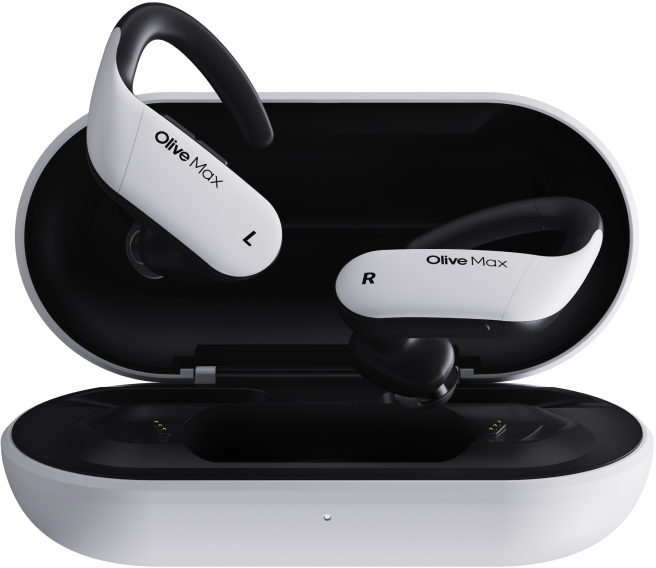
Bluetooth Hearing Aids vs. Bluetooth Earbuds: What's the difference? And What Should You Check
Regardless of age, many people nowadays use Bluetooth wireless earphones. Starting with devices like AirPods, wireless Bluetooth earbuds were initially priced high. However, as technology has become more widespread, it's now common to find Bluetooth earbuds for around $50. Despite being worn in the same ear, Bluetooth-enabled hearing aids have not seen a similar drop in price as Bluetooth wireless earbuds. Why is this, and who specifically needs to use Bluetooth hearing aids?
Image designed by Freepik
Difference Between Traditional Hearing Aids and Bluetooth Hearing Aids
Bluetooth hearing aids provide more features and connectivity options, while regular hearing aids are simpler and more economical.
Choosing the right hearing aid depends on individual needs and usage environments.
1. Connectivity and Functionality
Regular Hearing Aids:
Primarily provide the basic function of amplifying surrounding sounds.
Do not have direct wireless connectivity to TVs, phones, or other audio devices.
Some models may require a separate device to connect to specific devices.
Bluetooth Hearing Aids:
Use Bluetooth technology to wirelessly connect directly to smartphones, TVs, computers, and other devices.
Can stream music, phone calls, and other audio directly to the hearing aids.
Can be paired with smartphone apps for easier adjustment of hearing aid settings.
2. Convenience and Usability
Regular Hearing Aids:
Simple and intuitive to use.
No need for additional connections or settings, making them suitable for elderly users.
Bluetooth Hearing Aids:
Multi-functional and particularly convenient for younger users or those familiar with technology.
Initial setup and connectivity can be more complex, requiring familiarity with smartphones or other digital devices.
3. Price
Regular Hearing Aids:
Generally more affordable than Bluetooth hearing aids.
Lower maintenance costs due to simpler functionality.
Bluetooth Hearing Aids:
Typically more expensive due to additional features and technology.
Higher price for the added functionality and convenience.
4. Battery Life
Regular Hearing Aids:
Generally have longer battery life.
Consume less battery as they lack complex wireless functions.
Bluetooth Hearing Aids:
Bluetooth functionality increases battery consumption.
Some models use rechargeable batteries that need regular charging.
5. Upgradability and Expandability
Regular Hearing Aids:
Limited functionality makes future upgrades or feature expansions difficult.
Bluetooth Hearing Aids:
Software updates can add new features or improve performance.
Compatibility with various accessories offers expandability.
Who should consider choosing Bluetooth hearing aids?

Image desinged by Benzoix
People with hearing loss who:
-
Typically use wireless earbuds.
-
Enjoy listening to music and watching videos on their phones.
-
Frequently need to take calls on the go (such as delivery drivers or professionals who drive).
-
For these individuals, opting for non-Bluetooth hearing aids would require them to carry two separate devices
— This not only adds financial strain but also creates inconvenience in daily use. Therefore, if you fit into any of these categories, it is highly recommended to invest in hearing aids with Bluetooth functionality.
Why are Bluetooth hearing aids so expensive?
1. Technological Implementation Challenges
Bluetooth earphones are relatively easy to assemble as they do not require the complex functionality of amplifying selective sounds, which is crucial for hearing aids. Designing Bluetooth hearing aids involves integrating circuits and components for Bluetooth functionality without compromising on their core function of selectively amplifying sound. This technological complexity inherently makes Bluetooth hearing aids more expensive compared to earphones.
2. Monopoly Issue
Despite the technological challenges, Bluetooth hearing aids are generally priced excessively high. While many companies manufacture Bluetooth earphones, fostering price competition and technological advancement, the hearing aid market is dominated by a few companies that do not engage in vigorous price competition. Thus, these companies can set high prices for Bluetooth-enabled hearing aids and still find buyers.
Where can you buy Bluetooth hearing aids?
Bluetooth hearing aids can be obtained with a prescription, and for those with mild to moderate hearing loss, they are available online or at large discount retailers.
Prescription-required Bluetooth hearing aids typically cost over $3,000 for both ears, which may be financially burdensome for individuals with mild to moderate hearing loss. For them, purchasing over-the-counter (OTC) hearing aids is recommended.
OTC hearing aids with Bluetooth functionality are generally priced higher, so they are not commonly found in large discount retailers.
Therefore, I recommend comparing prices and features online before making a purchase.
Search "Bluetooth hearing aids" on Google to explore available features and determine if the price aligns reasonably with these features.
What to Check When Buying Bluetooth Hearing Aids
However, not all Bluetooth hearing aids offer the same features.
The presence of a microphone is particularly critical.
Some Bluetooth hearing aids are labeled as only capable of "streaming Bluetooth," meaning they lack a microphone and cannot be used for phone calls.
If you typically receive calls while wearing earphones and wish to switch seamlessly between streaming music and answering calls, it's crucial to verify if the device supports both "call and streaming" functionalities.
Especially for those who frequently take calls on the go, using Bluetooth hearing aids with built-in microphones is strongly recommended.
Bluetooth Hearing Aids That Meet All Needs
: Olive Air, Olive Max
These Bluetooth hearing aids offer:
- Reasonable prices
- Superior sound quality and performance relative to their cost
- Bluetooth functionality for both calls and streaming
- A design that is not overtly like traditional hearing aids
- Convenient online purchasing
- Rechargeable batteries
Olive Air

Olive Air is a new product from Olive Union.
Resembling earbuds in appearance, it is comfortable for daily use.
It also features noise-canceling capabilities, making it ideal for music enthusiasts and serving equally well as a quality hearing aid.
Olive Max

Olive Max is Olive Union's first OTC (over-the-counter) hearing aid, already satisfying many customers.
It includes hooks for a secure fit during active daily routines, especially beneficial during exercise.
With high maximum output, it satisfies those needing greater volume.









